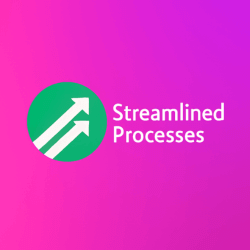For Secure Subscription Billing, see our main page here.
Why Security Matters in Subscription Billing
Monthly or recurring billing models are booming, especially in SaaS, e-commerce, and membership-based businesses. However, the demand brings increased risk. From customer data to payment details, billing systems are prime targets for fraud. As a result, Secure Subscription Billing isn’t a luxury—it’s a necessity.
Consider the global cost of data breaches. In 2023 alone, the average breach cost was over $4.45 million according to IBM. For subscription businesses, even a small data leak can lead to customer churn, legal issues, and loss of reputation. Therefore, investing early in secure systems pays off long-term.
Core Features of Secure Subscription Billing Systems
Effective billing platforms prioritize both user convenience and robust security layers. Below are the must-have features:
- PCI Compliance: Ensures cardholder data is handled according to global security standards.
- Tokenization: Converts sensitive card information into safe tokens for storage and retrieval.
- Encrypted Transactions: Uses SSL and TLS protocols to protect real-time payment transfers.
- Multi-Factor Authentication (MFA): Adds extra login protection for both users and administrators.
- Automated Fraud Detection: Analyzes transaction behavior to spot and block anomalies.
These tools help detect issues before they escalate. Therefore, the right billing system doesn’t just process payments—it builds trust.
Secure Subscription Billing vs. Traditional Billing
Traditional billing often relies on one-time payments and static invoicing. Secure Subscription Billing, on the other hand, must manage recurring interactions while keeping data safe all the time. This continuous engagement introduces more risk—but also more opportunity for automation and relationship-building if done right.
For example, a retail shop once sending monthly paper invoices now needs a platform that can remember customer preferences, auto-charge wallets, and encrypt every interaction. Consequently, robust security protocols must be in place. In short, when you move from ad-hoc billing to subscriptions, the need for secure architecture grows tenfold.
Choosing the Right Secure Subscription Billing Provider
There are dozens of billing providers, but not all are equal when it comes to security. Consider asking the following questions:
- Do they comply with PCI DSS?
- How do they handle tokenization and encryption?
- Is MFA available for both users and admin interfaces?
- What real-time fraud protection is in place?
- Do they offer role-based access controls?
Providers like Stripe, Chargebee, and Recurly take security seriously, but implementation depends on your team’s practices as well. For instance, giving every employee full-access billing credentials can still introduce vulnerabilities regardless of the platform’s features.
How Automation Enhances Security
Secure Subscription Billing systems that use automation can offer better monitoring and faster reaction times. AI-driven models, for instance, can flag suspicious account updates in seconds. Likewise, automated reconciliation helps catch internal errors or mischarges before they reach the customer.
Using AI tools responsibly adds another layer of protection. They can audit patterns outside of normal human detection, like frequent password reset requests from unusual IP addresses. Most importantly, AI can scale comfortably as your company grows—without sacrificing vigilance.
Industry Trends Shaping Secure Subscription Billing
Subscription models have evolved dramatically. So have the threats. Therefore, industry leaders are investing heavily in three key areas:
- Self-Sovereign Identity (SSI): Gives users control over how personal info is stored and shared.
- Zero Trust Architecture: Assumes no system or user is automatically safe, even inside a network.
- Behavioral Biometrics: Analyzes user actions—like typing speed or gesture patterns—for fraud detection.
In addition, more companies are adopting continuous compliance frameworks where security isn’t checked once a year but continuously monitored. This proactive approach aligns closely with what Secure Subscription Billing demands today.
Common Mistakes and How to Avoid Them
Even seasoned companies make basic errors. Here are common issues and ways to fix them:
- Storing plaintext card information: Use tokenization and never store sensitive data directly.
- Weak user passwords: Encourage strong password policies and enable MFA platform-wide.
- Lack of audit logs: Maintain detailed access logs to trace any suspicious internal changes.
- Insufficient customer notifications: Inform users immediately of charges, policy changes, and login alerts.
To clarify, security isn’t only a backend concern. How you notify customers, handle billing disputes, or enforce session timeouts all contribute to a safe ecosystem.
Reducing Risk Through Customer Communication
Transparent communication builds confidence. In Secure Subscription Billing platforms, consider enabling automated alerts for the following:
- New or expired payment methods
- Upcoming charges or plan renewals
- Failed transactions and retry attempts
- Login from new devices or IP addresses
Moreover, the clearer your communication, the fewer support tickets you’ll receive. And that means fewer chances to mishandle sensitive issues during customer service interactions.
FAQ: Secure Subscription Billing
Q: Is PCI compliance enough by itself?
A: No. While PCI is mandatory, it is only the baseline. You also need encryption, monitoring, and multi-layer safeguards.
Q: How often should billing systems be audited?
A: Experts recommend security audits every quarter. However, in fast-growing companies, monthly checks may be better.
Q: Can AI truly detect billing fraud?
A: Yes. AI can detect anomalies faster than manual checks. But AI must be monitored and validated by your team regularly.
Q: What’s the first step in securing a billing system?
A: Start by encrypting data in transit and at rest. Then implement tokenization and proper access control policies.
Q: Does secure billing slow down performance?
A: With modern tools, no. Secure Subscription Billing platforms today are optimized for both speed and safety.
In Conclusion: Investing in Secure Subscription Billing Pays Off
Building a subscription business is about trust. Customers rely on you to protect their most personal data and financial info. Therefore, Secure Subscription Billing should be built into your product strategy—not just added as a plugin. Prioritize it early, and you’ll create a strong foundation for long-term success.
This article was created with the assistance of AI tools and reviewed by our team at Streamlined Processes LLC to ensure accuracy and relevance.
Follow us on Facebook here.

